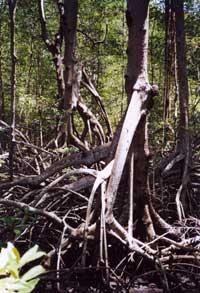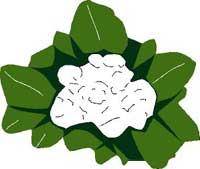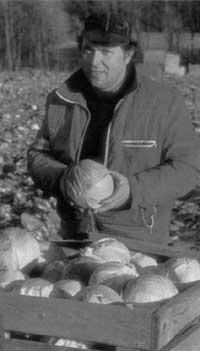Vegetable intelligence
2002/09/22 Galarraga Aiestaran, Ana - Elhuyar Zientzia

Tony Trewavas, of the University of Edinburgh, believes that plants have the capacity to calculate, make forecasts and remember facts. In animals, these capacities are clearly perceived, as they stand out in their actions and manifestations. But the plants, being the roots nailed in the soil and callate, do not seem very fast.
However, plants move and react to what surrounds them, reactions that are very smart. No one will deny that plants can receive information, but they can also calculate their consequences. They even prepare the answer, and the path they use for it is very similar to that used by the brain. These responses have been found to be based on complex molecular signals.
It has long been shown that plants have senses. Light, sound, chemicals, tremors and touch are capable of detecting and responding to them, even in the face of water, gravity and temperature. Normally, this response is usually a change in growth, but more is given than was thought.
Choosing the best option
This researcher has given numerous examples that the plants are intelligent. According to him, intelligence is manifested by taking the best option for individuals to adapt to the environment, and to realize that the plants have that capacity, you only have to look at the plants that have a hedgehog root.

The plants with hedgehog roots have numerous roots around the trunk, like crutches, which are those that allow the fixing of the trunk. When the surrounding plants remove light or nutrients, they are faced in a very evident way. Without wasting time, the plant moves towards the side of the sun and food, for what creates sticks in the area that suits it and lets the shaded ones kill.
However, many scientists do not believe that they really decide where the plant should grow, but only follow the programmed behavior. That is, they respond with reflections.
Tewasas does not agree. The ability to adapt to the situation of many plants goes beyond reflection. All the seeds of a plant species are programmed in the same way, but each of them can follow a very different path. And they show a great flexibility in their behavior. For example, the roots of plants, when looking for food and humidity, do not always go the easiest way. Studying the glechoma maturation, the researchers found that in good plots the plant produces many branches, buds and leaves, and that the roots grow in group and strong form. On the other hand, when the earth is not so appropriate, the roots grow faster, are thinner and come farther as if they were fleeing. In turn, plants in poor condition have fewer leaves. The new buds develop before and actively seek better soil. This means that the plant has to take into account a large number of agents, otherwise it would run the risk of making an erroneous decision.
Plants such as animals

The truth is that in recent years botanists are using words that were previously only used for animals such as food search, competition, predator, the invader... In this sense, Trewavas gives one more example in favor of plants being intelligent: a parasitic plant called "kuskula". The key does not perform photosynthesis. Instead, it is wound around other plants and introduces buds in the guest. In this way, through these outbreaks, you receive the food and water you need.
But the key does not weigh forces if the hostelero does not deserve it. Before starting to collect food and water, he analyzes the fertility of the guest and decides the tours that surround him. This was demonstrated in the same research, in which the mathematical models used in animals when going for food were applied, and it was confirmed that they met them. Here is the proof of the similarity between animals and plants!
Furthermore, plant cells take advantage of the voltage changes to send electrical signals from one place to another, as does the animal nervous system. Like when you feel pain, these changes in tension indicate which part of the plant has been injured. And both within the plant cell and among plant cells, the intermediaries used to send information are the same ones used in the nervous system. Animal and vegetable cells respond equally to different proteins, nucleic acids, ions, hormones and enzymes.

Does that show that plants are smart? Undoubtedly, Trewavas believes that yes. If this is given for good, we must recognize that beings as simple as amoebas are also intelligent. In fact, these unicellular beings have the ability to give adequate answers to adapt to the environment.
Surely more than one will have no problem putting oneself like other living beings, but I think many others are not too proud to recognize that plants and unicellums are also fast, discreet and clear. In any case, the key is in what intelligence is defined, right?
Published in 7K.

Gai honi buruzko eduki gehiago
Elhuyarrek garatutako teknologia






